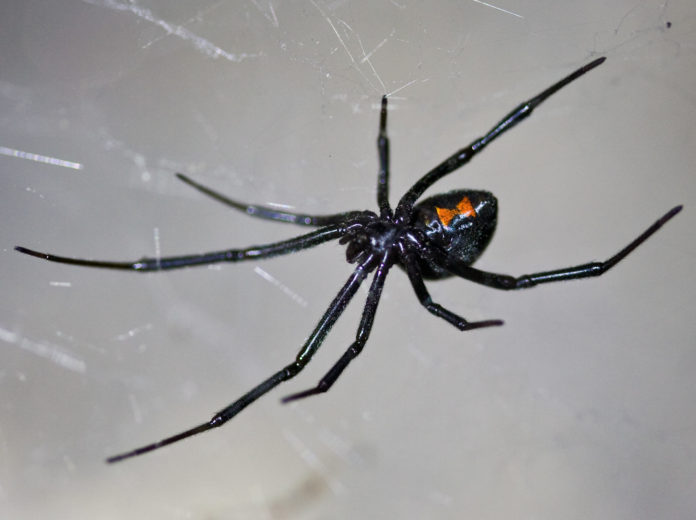Last Updated on January 29, 2024 by Fumipets
Arachnid Chronicles: Spiders Found in Texas
Texas, known for its vast landscapes and diverse ecosystems, is home to a myriad of wildlife, including an array of fascinating spiders. From the diminutive yet intricately patterned to the more robust and stealthy, the spider population in Texas adds an element of wonder to the state’s rich biodiversity.
Join us as we embark on a journey to uncover the various spiders that call Texas home, delving into their unique characteristics, habitats, and the intriguing role they play in the Lone Star State’s ecosystem.
Spiders Found in Texas
There are many different kinds of spiders in Texas, but two of the most prevalent are: Humans are threatened by Huntsman Spiders and Brown Recluse Spiders, with the latter being the more hazardous.
The good news for Texans is that these critters seldom penetrate houses or other structures in quest of food. If they find themselves inside a house, they will typically remain there rather than wandering about hunting for food like other spiders.
As a result, it’s critical to ensure that your home is well-sealed so that no unwanted visitors enter!
Top 9 Spiders Found in Texas
1. Long-Bodied Cellar Spider

The Long-Bodied Cellar Spider is a member of the mygalomorph spider family, which may be found all throughout North America. They’re known for their large, massive bodies and strong jaws, which they use to trap and consume their prey.
These spiders are dark brown or black in appearance, with faint yellow stripes on their heads or faces. They like dark, wet locations to dwell in.
Because they reside near the ground, these spiders are often encountered inside houses and structures. Because this spider searches for food on walls near the floor, they may be observed there. When hunting for food or water, this spider will travel about within the house.
2. Crab Spider

The Crab Spider is distinguished by its eight eyes and spindly legs, as well as lighter colored bands on the top of its body. These spiders have two sets of fangs: one injects poison into prey, while the other breaks open eggs to feed on. Because they are often observed in fields of flowers or on plants where they might capture their meal, the Crab Spider is also known as the Flower Spider.
3. Grey Wall Jumping Spider

The Grey Wall Jumping Spider has a slim body and lengthy legs, and its abdomen is striped vertically like an orb weaver. Although this spider has no venom, it will bite if it feels threatened. In sunny places, this spider may be found on fences, buildings, and plants.
4. Brown Recluse Spider

The violin-shaped markings on the back of this spider may range from tan to dark brown or black tones of red. Because they seek for cool locations to reside, Brown Recluse Spiders are often discovered inside houses. They are normally found at ground level, but when foraging for food or a partner, they may ascend to higher elevations. If not treated promptly, the venom of the Brown Recluse spider is very poisonous and fatal.
5. Black Widow Spider

Its name comes from the fact that female spiders consume their partners after mating. The Black Widow Spider prefers dark, wet environments. They have a gleaming black body with an hourglass marking on their belly in orange or red. These spiders also generate venom that is toxic to humans, so if they bite you, you will be in a lot of agony.
6. Carolina Wolf Spider

The Carolina Wolf Spider has a huge head and lengthy legs, and it may be found outdoors on walls or in trees. Carolina Wolf Spiders are brown in color with a dark stripe running down their backs and finishing at the end of their abdomen, giving them the appearance of a black belt around their waists!
7. Woodlouse Hunter Spider

The Woodlouse Hunter Spider is a member of the Linyphiidae spider family. Their modest stature and light brown hue distinguish them. This spider is not aggressive, but if it feels threatened, it may bite. They are frequently found near the ground, where they search for food such as woodlice, slugs, beetles, and other floor-dwelling insects. They often congregate around houses or sheds in the hopes of seeing prey.
8. Yellow Garden Orb Weaver Spider

Yellow Garden Orb Weavers are most often seen in gardens, where they weave webs on flowers and other plants. Female spiders have a yellow patch or line running down the middle of their abdomen. Males are gray with dark brown markings and may grow to be 6 inches long.
9. American Grass Spider

The American Grass Spider weaves a web between grass stems and leaves and may be found on plants, flowers, and shrubs. They have long, slender legs and an orange belly with black stripes. Because they have similar appearances, Americans Grass Spiders are sometimes mistaken for another spider species known as the Black Widow spider.
Are There Poisonous Spiders in Texas?
In Texas, there are venomous spiders. Two of Texas’ most prevalent deadly spiders are the Brown Recluse with a violin-shaped mark and the Black Widow.
Is There a Spider Season in Texas?
A spider season is defined as a time when one or more spider species become active. Because spiders are predators who feed on other arthropods like insects, their activity tends to coincide with that of their prey. Yes, indeed! In Texas, there is an annual cycle of spider activity known as “spider season.”
Changes in ambient temperature and precipitation patterns in the southern United States cause most of this yearly cycle. Spiders are most active in the summer when food is plentiful because they can readily locate prey, such as insects or other arthropods, that emerge from their hiding places when the weather heats up.
Spiders are active in Texas from early April to late November, although they are most plentiful from May through August.
Temperatures are at their highest, and food supplies, such as insects, are abundant. Some spider species are more tolerant of dryness than others, and those that are may emerge sooner and stay active longer into the autumn or even winter. Some species, such as the Brown Widow and Black Widow, require warmer areas with annual maximum mean temperatures regularly exceeding 75°F.
Conclusion
Although spiders may be found in Texas, they are not to be feared. The Lone Star state is home to a variety of spider species, each with its own set of features. We hope that this information helps assuage any anxieties you may have about spiders!
Questions & Answers: Weaving Through the World of Texas Spiders
How many species of spiders are found in Texas?
Texas boasts a diverse spider population, with over 1,000 species identified. This includes a wide range of families, each adapted to different ecological niches throughout the state.
Which venomous spiders are commonly found in Texas, and what are their characteristics?
While the vast majority of spiders in Texas are harmless, notable venomous species include the Black Widow and the Brown Recluse. Recognizing these spiders by their distinctive markings and characteristics is crucial for residents to ensure safety.
What habitats do spiders prefer in Texas?
Texas provides a variety of habitats, and spiders can be found in diverse environments, from woodlands and grasslands to urban areas. Understanding their preferred habitats aids in appreciating the role they play in maintaining ecological balance.
How do spiders contribute to the ecosystem in Texas?
Spiders play a vital role in controlling insect populations, acting as natural pest controllers. By preying on insects, spiders contribute to maintaining a balance in the ecosystem, thus promoting biodiversity.
Are there any unique or rare spider species exclusive to Texas?
Texas hosts several unique and endemic spider species, adding to the state’s biological richness. Exploring these rare species provides insights into the intricacies of Texas’ ecosystems and the importance of conservation efforts.


















